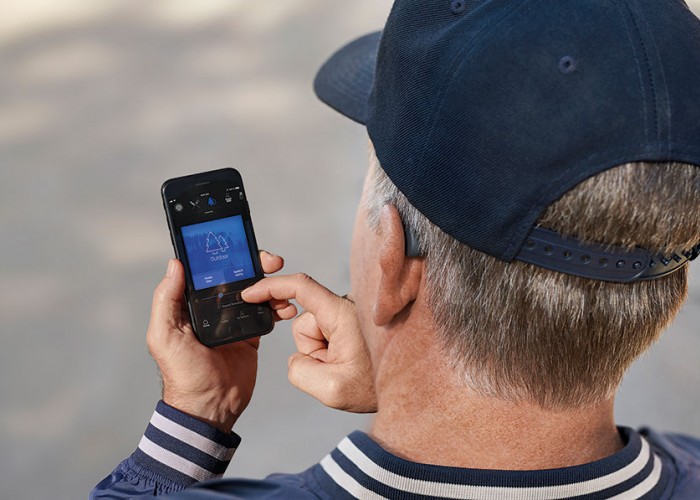Hear, hear!
Devices help young and old with hearing loss

Hearing loss affects over 30 million Americans — and it's not just a problem for the elderly. The majority (65 percent) of people with hearing loss are actually younger than age 65, according to the Better Hearing Institute. Because hearing has a profound effect on quality of life, it's important to recognize hearing loss at any age, and to know what can be done about it.
Signs of hearing loss
Many people think that their physician will tell them during their physicals if they have a hearing problem. But in reality, only about 14 percent of physicians routinely screen for hearing loss.
Do you:
Have trouble hearing over the telephone?
Find it hard to follow conversations when two or more people are talking?
Often ask people to repeat what they are saying?
Need to turn up the TV volume so loud that others complain?
Have a problem hearing because of background noise?
Think others seem to mumble?
Can't understand when women and children speak to you?
If so, it may be time to see your doctor and ask about referrals to an otolaryngologist (a specialist who can investigate the cause of hearing loss) or an audiologist (a specialist who will measure hearing loss).
Technologies that help
Assistive technologies that can make living with hearing loss easier include: hearing aids, some of which are hardly visible and others that can sync up with other electronic devices; amplified telephones or telephone caption services; personal infrared and FM systems that make it easier to hear the television, movies and religious services; and computerized speech recognition software that lets a computer change a spoken message into a readable text document.
Hearing aid styles
No longer big and clunky, today's hearing aids include:
- Completely-in-the-Canal (CIC) hearing aids that fit into the ear canal and are virtually invisible.
- Behind-the-Ear (BTE) hearing aids, which are much smaller and more discreet than their predecessors.
- Open-Fit BTEs, which are nearly invisible behind the ear and use a thin plastic tube or a thin wire to amplify sound into the ear canal.
Ask before you buy
Before buying hearing aids, ask:
- What features would be most useful to me?
- Does the audiologist perform real ear measures to verify performance of the hearing aids? Can he or she make adjustments and provide servicing and repairs? Will loaner aids be provided?
- Is there a trial period to test them? (Most manufacturers allow a 30- to 60-day trial period during which aids can be returned for a refund.) What fees are nonrefundable?
- How long is the warranty and does it cover future maintenance and repairs?
- What is the total cost?
Battery know-how
If you've bought hearing aids, figure out a good storage method for their batteries. Don't carry batteries loose in your pockets or purse. Besides the risk of loss, contact with metal items like keys or coins can short-circuit them. Store batteries at room temperature, and open the battery door on your hearing aids when they are not in use to reduce battery drain.
Size up battery packaging for its ease or difficulty. For folks using hearing aids, especially older seniors, getting tiny batteries out of a package can be an exercise in frustration. The EZ Turn & Lock packaging for Energizer hearing aid batteries has a dial that lets you easily pull spare batteries out as you need them. Learn more at www.energizer.com.
Savings and resources
Not all insurance covers hearing aids, but AARP members can save 20 percent on hearing aids through the AARP Hearing Care Program. Visit www.aarphealthcare.com for more.
Online hearing information resources include The Better Hearing Institute at www.betterhearing.org and Hearing Loss Association of America at www.hearingloss.org.
-
More ways to stay healthy
-
Share this story:





